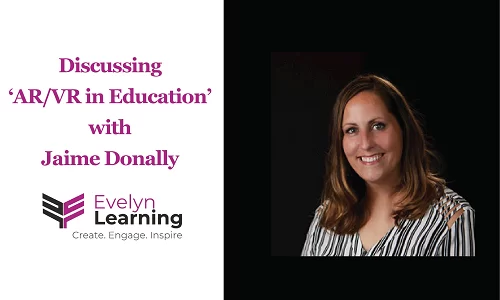To boost their training efforts, more and more companies are replacing conventional instructor-led training (ILT) programs with e-Learning courses. The advantages of e-Learning include cost-effectiveness, just-in-time instruction, and quicker delivery speeds, to name a few. It is important, however, that learners are exposed to the shift in a systematic manner during the transition from ILT to e-Learning. We will look at ten innovative ways to encourage online training to one’s learner base and boost their e-Learning course in this blog.
Technology used to be flat and one-sided, and it could not efficiently communicate subjects. New innovations now make it possible to reach and engage learners. However, these latest developments have also revealed new challenges.
Courseware is frequently overly complicated, with confusing text, pictures, links, and graphics, a lack of continuity and clarity in the learning message, and navigation that is much more complicated than appropriate. All of this makes it difficult for students to concentrate, understand, and learn what they want. Students become disengaged, unmotivated, and uninterested in their online learning as a result.
When careful attention is paid to the seemingly minor details that are too easy to overlook, the standard of online learning courses has boundless potential for development and evolution. Educators can follow these basic and effective rules to quickly boost their e-Learning courses and build the best e-Learning courseware.
1) One idea, one screen
Since the course designer incorrectly assumes that fancy design contributes to more successful e-Learning, some e-Learning course screens seem to be a jumble of ideas and concepts. In reality, it is the polar opposite. A course’s screens can only express one concept at a time. This Rule of One keeps the student centered on the most critical concepts one at a time and helps boost the e-Learning Course.
2) Keep it simple (visually)
One must remove any unnecessary graphics, photographs, and text from their online learning materials, restricting them to just a few pieces that are well-structured, appropriate, high-quality, and neatly organized. When classes become difficult, visual aids such as graphs and charts provide the opportunity to choose more over less. Otherwise, choosing white space over needless and distracting clutter is a reasonable rule of thumb to boost ab e-Learning course. One may use headings, bullet points, and short paragraphs for a clean visual structure that allows online learners to easily locate important things within the document.
3) Make it easy to navigate
Learners should be able to work through a course independently. Arrows, icons, and buttons are examples of navigational aids that must be thoughtful, practical, and easily recognizable. Navigating a course should be similar to navigating a road: it should be straightforward and easy to follow so that one can concentrate on the task at hand.
4) E-Learning video teasers
Consider how much a trailer for a film excites us. A teaser attracts the viewer by showing clips from the film’s most entertaining or noteworthy scenes. This straightforward approach can also be used to promote e-Learning and boost one’s e-Learning course. Educators can create a video teaser that focuses on what the e-Learning course will be like and how it will help learners boost their results.
5) Include self-assessment.
Teachers must enable students to self-assess their learning by providing opportunities for them to do so. Allowing students to score their own discussion posts or contribute to their own grade for course participation can be rewarding since it encourages students to take ownership of their learning and hence helps educators boost their e-Learning course.
6) Providing incentives and rewards
Who does not want to be rewarded? Here is an example of how one can use incentives to boost their e-Learning course: instructors can build a fast learning game or prepare a quiz based on the e-Learning course. They can inform the workers that the first fifteen employees who sign up and play the game will earn prizes, discounts, or vouchers. This method of rewarding students also promotes word-of-mouth publicity.
7) Setting time constraints rather than slide constraints.
Or, to put it another way, quality over quantity. The total number of slides in a course does not imply usefulness if the content on those slides is poor. Instead of a slide quota, one can build a course with a time limit. Learners can become disengaged if educators use slides that have no meaning. Setting a time limit will help one to boost their e-Learning course as it allows people to get down to the point and stay on task.

8) Importance of social interaction
E-Learning allows students to communicate on a variety of social media channels. To involve the students and boost their e-Learning Course, educators can use social media. To help create a sense of classroom community, one can add a Twitter badge to their course homepage. They can also use a hashtag to push tweets with course-relevant content to their students.
In order to socially engage users, educators can consider using embedded audio and video, chat rooms, instant messaging, broadcast text messaging, and homepage announcements. Furthermore, creating explanatory screencast videos has become increasingly simple and inexpensive, providing yet another communication platform.
9) Rather than text, use visuals
Teachers can transform a long, complicated text into a visual representation of the data. Could one, for instance, use a flow chart, video, or infographic to illustrate a process that is described in the text? Visuals promote thought and assist in the solidification of ideas that might be lost in vast blocks of text.
10) Corporate Newsletters
A newsletter is a good way to boost an e-Learning course and raise awareness about the training one is providing. The good news is that no matter what, every employee has access to the weekly/monthly/bi-monthly/quarterly/annual newsletter, which makes it a good place to advertize. One may provide information on the upcoming training in a given location in the newsletter. The promotional material for the e-Learning course in the newsletter, including posters and infographics, should walk a fine line between text and visuals so that workers can scan it easily.
Concluding Remarks
We have designed these online learning tips to increase online learners’ participation and inspire them to get the most out of their courses. Although some of them can seem obvious, they are often the overlooked—but crucial—’small’ or ‘simple’ specifics that make or break a course’s performance. Focusing on increasing interaction rather than only providing content transactionally would improve the consistency of a course’s message. This will ensure engagement and, eventually, retention.
We cannot overstate the importance of marketing and spreading the word about the advantages of online learning to students. Well-designed promotional campaigns attract more students to enroll in the course, ensuring long-term sustainability and profitability for the company. So, one must keep these ten simple e-Learning promotion strategies in mind in order to boost their e-Learning course. Educators can tell learners what they are getting into and how online learning will help them perform better, and their e-Learning enrollment rates will skyrocket.
Image Sources: Shutterstock and Unsplash
For more information on boosting and marketing an e-Learning course, visit our blog.
Create. Engage. Inspire.

















